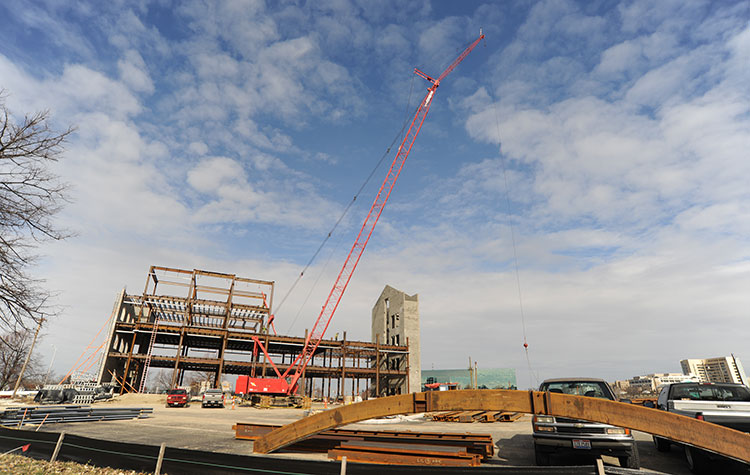Document Type
Article
Publication Date
11-2010
Publication Source
ITE Journal
Abstract
Motor vehicle crashes are one of the leading causes of death in the United States. The most recent data available show that in 2006 there were almost 6 million police-reported motor vehicle crashes in the United States where a total of 42,642 people were killed and an additional 2.6 million were injured. The majority of these motor vehicle crashes occurred at intersections or within the intersection influence areas. Traffic conflicts occur at intersections due to traffic streams moving in different directions interfering with each other, and as a result they become areas with high potential for traffic crashes compared with non-intersection areas of the roadways. In order to reduce the potential conflict points, access to a freeway is only provided through gradeseparated intersection ramps (also known as interchanges). Freeways play a major role in providing mobility due to their high operational speeds and their being fully access controlled. Like other intersections, freeway-ramp areas have also been identified as locations highly prone to crashes as compared to other segments of freeways. A number of studies have been conducted to determine the causes and characteristics of crashes that occur at freeway ramps in order to devise and apply preventive countermeasures to reduce the occurrences of such crashes. Most of these studies have focused on developing and calibrating factors that contribute to traffic crash occurrences such as highway geometry, traffic volume, ramp location, and type of interchange. Other studies analyzed the type and patterns of crashes on urban freeways.
For instance, a study by McCartt et al highlighted types and characteristics of ramp-related crashes, which showed that the type of crashes that occur at entrance ramps and exiting ramps are generally different. The most common type of crashes at exit ramps involve vehicles running-off the road while speeding. For the entrance ramps, sideswipe and cut-off crash types are the most frequent ones, with lack of yielding of right of way involving merging drivers from entrance ramps identified as a major cause. What is not clear, however, is whether at-fault merging drivers (from entrance ramps) know who had a right of way at the freeway merging area. In the present study, we assumed that most of these atfault drivers think that they have a right of way over drivers already on mainlines. To date, we have not found any study that has examined the factors that influence on-ramp merging drivers not yielding the right of way to freeway mainline traffic. In particular, the contribution of drivers’ knowledge of who has the right of way at the freeway-entrance ramp merge area has not been addressed. By determining what drivers know about right of way at the freeway merge area, including their driving actions, appropriate countermeasures such as education, engineering, and legislative actions can be implemented as future crash countermeasures.
In addition, some states’ driver’s license testing handbooks inform new drivers to accelerate at on-ramps to attain the freeway mainline speed. This is also in accordance with the American Association of State Highway and Transportation Officials (AASHTO) guidelines whereby auxiliary (acceleration) lanes are provided in order to minimally affect the through traffic operations. Normally no yield sign is needed for ramps having standard-length acceleration lanes. The abovementioned reasons may also cause some on-ramp merging drivers to think that they share equally the right of way with the mainline traffic; this misconception may be one of the contributing causes of collisions at on-ramp merging areas.
Furthermore, traffic safety studies acknowledge that certain demographic factors contribute to most of the motor vehicle crashes. For instance, gender and age differences in traffic crash involvement are well documented. The youngest and oldest drivers are more likely to be involved in motor vehicle crashes; similarly, younger males are more likely than younger females to be involved in motor vehicle crashes. On the other hand, females older than 50 years of age are more likely than the same age males to be involved in fatal crashes. Specifically, half of fatal crashes involving old drivers (80 years and older) tend to occur at intersections, and young drivers (16–25 years old) have a risk of being involved in traffic crashes to the order of 2.5 times higher than that of other drivers. Therefore, in the present study, we assumed that gender and age will be associated with drivers’ knowledge of freeway merging areas’ right of way.
Particularly, the objective of this paper is twofold: to explore the knowledge of drivers concerning who has the right of way between the one on mainline lanes of a freeway and the one entering the freeway through the on-ramp junction lane and to explore the drivers’ actions when driving in the vicinity of freeway-entrance ramp merge areas, whether driving on the freeway mainline lanes or entering through the ramp junction lanes.
Inclusive pages
36-43
ISBN/ISSN
0162-8178
Document Version
Published Version
Copyright
Copyright © 2010, Institute of Transportation Engineers, 1627 Eye Street NW, Suite 600, Washington, DC 20006 USA.
Publisher
Institute of Transportation Engineers
Volume
80
Peer Reviewed
yes
Issue
11
eCommons Citation
Eustace, Deogratias; Owusu-Ansah, Stephen; and Indupuru, Vamsi Krishna, "An Exploratory Survey of Drivers’ Knowledge of Right of Way at Freeway On-ramp Merging Areas" (2010). Civil and Environmental Engineering and Engineering Mechanics Faculty Publications. 12.
https://ecommons.udayton.edu/cee_fac_pub/12
Included in
Civil Engineering Commons, Geotechnical Engineering Commons, Other Civil and Environmental Engineering Commons, Transportation Engineering Commons




Comments
Used with permission. Permission documentation is on file.